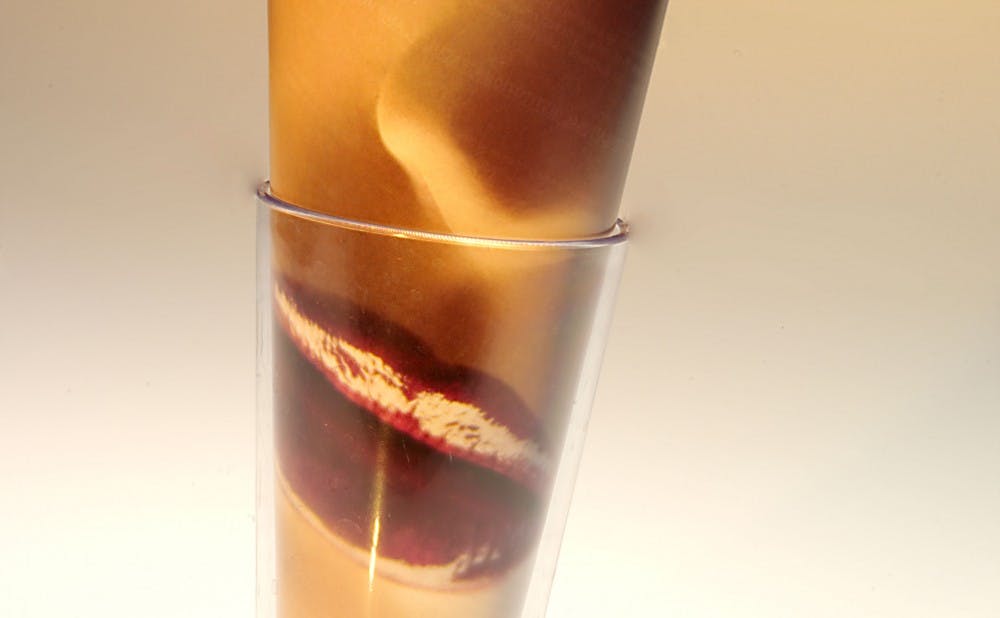In her 17 years as a photojournalist, Kelly found that the images that shape our world are necessary for information processing, but can also be taken at face value too often.
“This rallying around iconic images can be important," said Kelly. "But to me, the lack of critique afterwards is what the exhibit was trying to start talking about...the lack of understanding that an event or a group of people or a thing is often much more complex than what the iconography shows it to be.”
Although she enjoyed photojournalism, Kelly also found the profession limiting in terms of what she wanted to do with her work. Inspired by portraiture by Elliott Erwitt and Richard Avenon, as well as the deeply political and intricate street art in Argentina, Kelly decided to focus on the art aspect of her trade. After moving from a long career in Southern California down to Argentina to freelance for four and a half years, she applied and was accepted to Duke’s MFA program.
“Last year was pretty much a shift in identity, going from talking about being a photographer to being an artist, and letting go of photojournalism to a degree. I love photojournalism, what it does and what it brings, but I found it limiting…art offered me this ability to pull strengths from photojournalism, from my documentary work, from my other interests.”
As part of being a Kenan Arts Fellow, applicants must submit a proposal for an exhibit. Christian Ferney, Kenan student programs director, loved Kelly’s idea for the exhibit because it meshed so well with Kenan’s ideals. “Caitlin’s own intellectual and career trajectory fits really well with…the way we approach human rights," said Ferney. "It allows her to see the focus of this exhibit…how image as representation takes on a life of its own.”
This exhibit also contains Kelly’s personal project, "Advance for Use Sunday." By manipulating images and stories to bring attention to how we process information, the project critiques the textual and visual information represented in the AP database. She is also particularly interested in social themes, as her thesis work has dealt with women, HIV and their image and role in society. These two concepts come together in the exhibit to create a conversation about our perception of human rights, a concept Kelly feels is often abstract for Americans. The exhibit is a way to bring the concept of human rights struggles into the lives of those in the Duke and Durham community.
“It’s interesting how we ‘other’ people," said Kelly. "Human rights are two words that we tend to say, okay, well, when I think about human rights, I’m thinking about what’s happening in Africa, I’m thinking about what’s happening in Afghanistan, and those are absolutely human rights…but you can make that closer to home as well. And I’m always interested in how visual language, or visual rhetoric, contributes to that dialogue.”
Along with Kelly, there will be five other artists featured at the exhibit—three from Duke and three from UNC. While this mix of schools and artists was unplanned, it gives the project a distinctly collaborative feel. The exhibit will feature a variety of media, including at least one video, and each will have its own space along the hallway within the Kenan Institute. There will also be a panel discussion with three professors from the schools: Wesley Hogan, Director for the Center for Documentary Studies; Francesca Dillman Carpentier, Associate Professor at the School for Journalism and Mass Communications at UNC; and Pedro Lasch, Associate Professor of Art, Art History and Visual Studies at Duke.
Ferney is especially excited for this discussion opportunity. “I think if people take the time to go to the panel discussion, they won’t be disappointed because it enriches the experience…You have people who can really speak to these differences of approaches and talk about how they intersect and how they don’t,” said Ferney.
Ultimately, Kelly hopes that the exhibit will allow people to understand the two sides of the use of iconic images in our world with dialogue and reflection.
“The exhibit is definitely a critique of iconography, but it’s not necessarily a ‘let’s throw it all out the window.’ The idea is to be able to appreciate and critique at the same time,” she said.
"The Icon Industry: The Visual Economy of Human Rights" will open at The Kenan Institute for Ethics on Monday, Nov. 4, at 5:30 p.m. The exhibition will run through November. For more information, visit http://kenan.ethics.duke.edu/.
Get The Chronicle straight to your inbox
Signup for our weekly newsletter. Cancel at any time.

